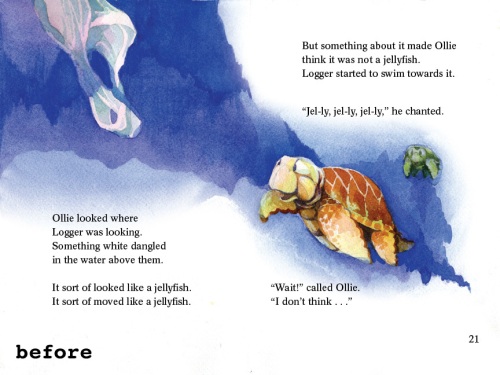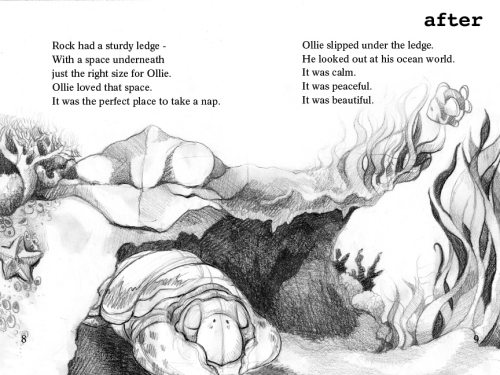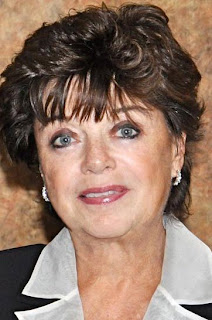Nicole Weaver speaks four languages fluently: English, Creole, French and Spanish. She teaches high school French and Spanish. She is the author of three trilingual books: Marie and Her Friend the Sea Turtle (2009), My Sister Is My Best Friend (November 2011), and My Brother Is My Best Friend (currently under contract).
Thanks for this interview, Nicole. Tell us, did you always want to be a writer?
No, I did want to be a writer. I had my heart set on being a translator and interpreter for the United Nations. I grew to like languages after learning English as a third language and later learning Spanish. I ended up taking Spanish my final year of high school because I wanted to drop a physics class. My guidance counselor gave me two choices: Stay in physics or replace it with another class. Well, lucky for me, the only class offered during physics was Spanish two honors. Even though I had never studied Spanish before, I took a gamble and switched to Spanish. Thus, began my true love affair with learning languages. Twenty-five years later, that decision has served me well. As a polyglot, I teach high school French and Spanish. Now, I have branched out by writing trilingual children books.
Congratulations on the release of your latest picture book, My Sister Is My Best Friend. What was your inspiration for it?
My newly published book: My Sister Is My Is My Best Friend is a trilingual story about two twin sisters who do everything together. I got inspired to write the story after meeting my half-sister Rachelle in 2008 for the first time.
I was very happy to have met her and sad that we did not grow up together. Since I have a vivid imagination, I began daydreaming about what it would have been liked to grow up with Rachelle. I had a blast writing the book because it helped me sort through some emotional situations. I do believe writing is great therapy for the soul.
Tell us about your children's books.
I have written three trilingual children’s picture book. My first book titled: Marie and Her Friend the Sea Turtle, My Sister Is My Best Friend, and a third book currently under contract with Guardian

By: Annie Beth Ericsson,
on 2/1/2011
Blog: Walking In Public
( Login to Add to MyJacketFlap)
JacketFlap tags:
paintings, painting, watercolor, revision, before and after, my books, sea turtles, ollie and logger, resolutions, Add a tag
 
Finished revising one of the color pieces for Ollie And Logger, which is the first dummy book I’m polishing up for submission (my New Years’ resolution due date: April 1st!). And… well… it’s an improvement. I’m happy with Logger, the brown turtle, since he’s in the style of the first color piece I revised. But wow, painting a plastic bag floating in the ocean is CRAZY hard!!
I heard a quote recently of an artist who wouldn’t accept any manuscripts that contained “horses or bicycles” (smart move). Well, from now on, no more stories about amorphous objects in water, either. Just say no.
Filed under: my books, paintings Tagged: before and after, ollie and logger, painting, resolutions, revision, sea turtles, watercolor        

Revisions, revisions, revisions! It has been a year since I worked on Ollie And Logger In The Deep Blue Sea, the early reader book that I illustrated (and my mother wrote) for my first semester senior project. I love the story and feel good about the pacing of the sketches as a whole. But as I look back, I was deeply dissatisfied with a couple of things. The characters seemed awkward, stiff and bloated, their faces falling short of the natural cuteness I was going for. And on top of that, all the color work I did wasn’t working either. Try as I might last fall, I was not getting the lightness and fluidity of underwater scenes, and all the pieces look overworked. That’s the hardest part about watercolor – knowing when to stop, because once you go too far there is no going back, just starting over.
Despite my self-criticisms, I am confident that we have something marketable with Ollie And Logger – it’s just a matter of revising. So I spent my three-day weekend reworking the characters and the first color piece . . . and here are the results of the makeover!




Filed under: my books, sketches Tagged: early reader, jennifer a ericsson, ollie and logger, revision, sea turtles, sketches, watercolor    1 Comments on The Great Turtle Makeover, last added: 10/14/2010
1 Comments on The Great Turtle Makeover, last added: 10/14/2010
 The life of a book is a curious thing. It ripples outward into places you never expected it to go. Such as been the life of Turtle, Turtle, Watch Out! When I first wrote this book, I knew about sea turtles. But I hadn't lived turtles, not the way I have in the years since. Where the book has taken me and other readers has surprised and thrilled me. Like many authors, I have always been intrigued by sea turtles and the sea turtle journey, particularly the way females find their way back to the beach where they hatched. But what also impressed me is how many people love sea turtles and what they are doing to help them: turning off beach lights, guarding beaches, avoiding driving on beaches, preventing plastic pollution, and installing Turtle Excluder Devices (TEDs) on nets. (As an intern at National Wildlife Federation in 1987, I wrote conservation articles to encourage people to enact TEDs laws.) The first book came to me as a circle of hands. In fact, I called the first versions of my manuscript "Turtle and the Unseen Hands." Because that's the way I imagined this loving circle of people working hard to help sea turtles survive. The book title changed but it was this human participation and positive environmental message that made the book popular in a field that already had some lovely sea turtle books. Schoolchildren celebrated the book by crafting paper plate turtles, setting the book to music, tracking the turtle's journey, and writing turtle poetry. Sea turtles connect with people on some kind of heart level. I cannot count the number of sea turtle shaped necklaces that librarians have worn. (Okay, so I have turtle earrings and scarf!)  Yet the book went out of print years later when Orchard was slimming its backlist. Soon, anguished teachers contacted me to try to buy the book, which was at times going for $400 on ebay. (Wow, why didn't I keep a few cases of those ol' books around? Could have paid off my mortgage!) Extraordinary science educators Emily Morgan and Karen Ansberry were championing the book in their NSTA bestseller, Picture Perfect Science Lessons. Many of my nonfiction books have had this slow burn, where they catch on in multiple formats or languages several years after their release. Fortunately Charlesbridge, then spearheaded by Judy O'Malley who'd loved the book years before as a reviewer, rescued the turtle—okay, turtle book—again. The book was reborn with luminous new illustrations by Annie Patterson and additions to the main text plus whole new swaths of endmatter on recent conservation action and profiles of all sea turtle species. ![]()
 This is been quite the week for news, some of which has been quite unpleasant to share with young children. I find myself thinking of young children alone in crushed buildings and how scared they must be. It’s hard for children here to avoid seeing the photos or hearing the news and I’m sure they have lots of questions about earthquakes. This is been quite the week for news, some of which has been quite unpleasant to share with young children. I find myself thinking of young children alone in crushed buildings and how scared they must be. It’s hard for children here to avoid seeing the photos or hearing the news and I’m sure they have lots of questions about earthquakes.
Pandas’ Earthquake Escape comes out in March. Like the recent Haitian earthquake, the earthquake that hit China on May 12, 2008 killed or injured hundreds of thousands of people. However, that earthquake also hit right in the middle of the territory where endangered Giant Pandas live. This book follows a mother Giant Panda and her cub that escape from their refuge during the earthquake. Will they survive on their own? What is rocking their world? We are right in the middle of translating the book in order to get the eBook up with audio and all the links. For now, here is a link to the book’s homepage that includes a preview PDF. http://www.sylvandellpublishing.com/Panda.php. While not all links are working yet, the For Creative Minds link (http://www.sylvandellpublishing.com/ForCreativeMinds/Panda_FCM.pdf) is live and you are welcome to print and use.
And, we made a special Richter Scale Magnitude chart to help too! http://www.sylvandellpublishing.com/images/RichterScale_Magnitude.pdf
Arctic blast:
While temperatures may be somewhat more “normal” now, the recent cold weather affected more than people. Cold-stunned, endangered sea-turtles have been washing ashore or found just off shore floating. While many sea-turtles have died as a result of the cold, sea-turtle hospitals across the southeast and Texas are doing everything they can to help the injured turtles.
SeaWorld Orlando took in nearly 100 cold-stunned turtles between January 6 and January 11. Aquarists are warming up the animals with heat lamps and blankets, and providing warm fluids. Each animal has also received a physical exam to check their internal temperatures and look for infections caused by their cold condition. Once the weather warms up and the animals receive a clean bill of health, the park’s Animal Rescue and Rehabilitation Team will return all of them to Florida waters.
Over in the Panama City, FL area, the Gulf World Marine Park has been caring for over 600 sea turtles. Local businesses and Wal-Mart have donated blankets and kiddie pools to help get the turtles warmed up.
What is cold-stunned? As mammals, we are warm-blooded. We keep our body temperature constant. A normal temperature for humans is 98.6. Reptiles (like sea-turtles, snakes & lizards) are cold-blooded. They warm themselves by the air or water around them. That’s why you might see reptiles basking in the warm sun—to warm themselves. Under normal circumstances, sea turtles migrate to warmer weather during the winter. Usually the ocean water around Florida would be warm enough. However, with the recent cold snap, the water temperature has dropped, causing the sea-turtles’ body temperatures to drop too. If they get too cold, they can no longer move, swim, or catch food.
For a variety of news articles or more information, please visit www.seaturtle.org: http://www.seaturtle.org/news/
Strong character, doing what’s right and helping each other and the animals around us is what it is all about!
Here is a one-week code to access Sylvan Dell’s related titles as auto-flip, auto-read, 3D-page-curling, and select

By: sylvandellpublishing,
on 11/29/2009
Blog: Sylvan Dell Publishing's Blog
( Login to Add to MyJacketFlap)
JacketFlap tags:
Teachable Moments, hibernate, hibernation, migrate, muskrats, terrapins, tundra swans, winter, animals, migration, moose, eagles, raccoons, wolves, sea turtles, loons, track, humpback whales, salmon, Add a tag
As the weather turns cold and winter approaches, we add layers of clothes and turn up the heat. What do animals do to prepare for the cold?
Adapt:
Some animals prepare for cold weather by gathering food and storing it for the upcoming winter when it will be harder to find. Can you think of any animals that do this?
Other animals are able to find food through the winter and grow thicker layers of fur. Can you think of any animals that do this?
Hibernate:
Some animals go into a deep sleep over the winter. They usually will eat lots of food in the fall then go to sleep in a den or a deep burrow. A true hibernating animal’s breathing slows way down and its body temperature drops.
Some animals sleep heavily for long periods but will wake up every occasionally to eat.
Migrate:
Seeing birds flying south in the fall is common. They are not only flying to warmer climates for warmth but to be able to find food that is more readily available. They usually follow the same routes every year. Some animals learn the routes by following other animals (mother?) but other animals seem to know where to go by instinct. Scientists aren’t sure how the animals know how, when, or where to go.
Birds are not the only animals that migrate to warmer weather during their winters. Can you think of any other animals that go south for the winter? Do you know any people who go south for the winter? Where do they go?
Not all migrations have to do with warmer weather. Some animals migrate as part of their life cycle. Life cycle migrations may take place every year and similar animals may gather in special spots to find mates or to have babies.
Other animals might migrate only when giving birth or to lay eggs in a specific location (where they were hatched).
Websites of interest:
ParkWise (Alaska National Parks’ e-classroom): Migration: http://www.nps.gov/akso/parkwise/Students/ReferenceLibrary/general/MigrationBasics.htm
Tracking animals. Sometimes scientists put satellite collars on animals so they can track their movements. This helps us to understand how, where, and when animals move around the earth. Here are some sites where you can follow various animals:
WhaleNet: (tracks seals & whales) http://whale.wheelock.edu/whalenet-stuff/stop_cover.html
SeaTurtle.org: (tracks sea turtles) http://www.seaturtle.org/tagging/
Journey North: (tracks whooping cranes, hummingbirds, monarchs and other animals) http://www.learner.org/jnorth/
Alaska Seal Life Center: (tracks seals) http://www.alaskasealife.org/New/rehabilitation/index.php?page=rehab-tracking.php
Wild Tracks: (manatees) http://www.wildtracks.org/Florida/home.html
Ideas for experiential learning:
Keep a wildlife journal for one week. Identify what animals you see and what they are doing. Do you think they are getting ready for winter? Do you see any signs of animals even though you might not see the animals themselves?
• Bird feathers
• Chewed pinecones
• Chewed acorns or nuts
• Scat (droppings)
• Animal tracks
• Bones
What are some ways that humans prepare for cold weather? How do the clothes we wear change with the seasons? Why?
Do we eat any foods now that we might not eat during the hot summer? What foods and why?
In the book, Whistling Wings, the young tundra swan flies about 1,000 miles without stopping to rest or eat.
• Look at a map and figure out how far 1,000 miles is from where you live. Could you walk there without stopping to slee
By: Eleanor Tylbor,
on 2/18/2008
Blog: NOTE TO MYSELF
( Login to Add to MyJacketFlap)
JacketFlap tags:
banned books, article, daily life, daily life, children's book, article, families, Loudon County elementary schools, Loudon County elementary schools, gay penguins, Tango Makes Three, Tango Makes Three, library, books, education, nature, children's book, gay penguins, families, Add a tag
NOTE TO SELF: A FAMILY IS A FAMILY IS A FAMILY...SOME PEOPLE SEE SUBVERSIVE PLOTS EVERYWHERE, ESPECIALLY IN LOUDON
Given the fact that this is a place where there is reading matter covering a wide variety of subjects, one parent whose sensitivities were obviously jarred by the prospect of gay penguin parenting, has managed to get a book pulled from the library shelves. Some people see subversive plots at every turn, even within the pages of a children's book.
A children's book about two male penguins that hatch and parent a chick was pulled from library shelves in Loudoun County elementary schools this month after a parent complained that it promoted a gay agenda.
The decision by Superintendent Edgar B. Hatrick III led many parents and gay rights advocates to rush to the penguins' defence. Many say that the school system should not have allowed one complaint to limit children's literary choices. Some are calling for an overhaul of the book review policy. Besides, many say, what could be wrong with a book about penguins?
"The book is based on a true story . . . of what happens in the animal kingdom," said David Weintraub, director of Equality Loudoun, a gay rights organization. "It's about the joy of being part of a family. These penguins love each other. They take care of each other. The book, "And Tango Makes Three," by Justin Richardson and Peter Parnell, draws on the real-life story of Roy and Silo, two chinstrap penguins at the Central Park Zoo in New York. It also appears to make a point about tolerance of alternative families.
As the book says, Roy and Silo were "a little bit different" than the boy and girl penguins who noticed each other and became couples. "Wherever Roy went, Silo went too." After they tried to hatch an egg-shaped rock together, a zookeeper gave them a fertilized egg to nurture. Experts say male chinstraps typically share incubation duties with females.The 2005 book, written with simple words and colorful pictures and dedicated "to penguin lovers everywhere," topped the American Library Association's list of banned or challenged books in 2006. Parents challenged the book in Shiloh, Ill., and Charlotte. Administrators in Charlotte initially yanked the book but later restored it, according to news reports.
Read the whole story here:
http://loudounextra.washingtonpost.com/news/2008/feb/16/tango/
Extra Information regarding penguins found on the Sea World site: http://www.seaworld.org/infobooks/Penguins/hatching.html:
"Care of the chicks
1 . Chicks require attentive parents for survival. Both parents feed the chick regurgitated food. Adults recognize and feed only their own chicks. Parents are able to identify their young by their chick's distinctive call (Marchant, 1990; Simpson, 1976).
2. Male emperor penguins exhibit a feature unique among penguins. If the chick hatches before the female returns, the male, despite his fasting, is able to produce and secrete a curdlike substance from his esophagus to feed the chick (Marchant, 1990; del Hoyo, et al., 1992) allowing for survival and growth for up to two weeks (Pr6vost and Vilter, 1963-1 Stonehouse, 1975).
|

















This was a great interview, Mayra. Nicole's books all sound wonderful for children.